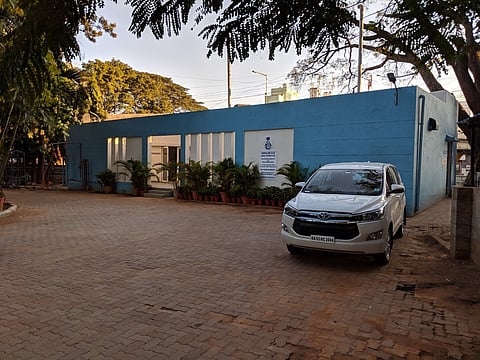Sustainable Integrated Decentralized Waste Management
Abstract
Generation of the liquid waste (sewage) and bio-degradable solid waste (food waste) is inevitable in any community. Scientific disposal of both wastes is mandatory by the community like apartments, industries as per pollution control board norms. Generally in most cases food waste is composted and liquid waste is treated in various technologies. Part of the treated water is reused for toilet flushing and gardening and rest is let out to drains. Anaerobic technologies produce biogas which can be used for various purposes like cooking, power generation, etc. Hence combination of anaerobic and aerobic technologies if are used in the process flow has many advantages and will be a sustainable option for scientific disposal and reuse of both wastes. There are several case studies to that extent.
Introduction
Anaerobic degradation liquid wastes like septic tanks are century old. Lots of improvements have occurred in the last three decades in the anaerobic technologies. In case of liquid waste the effluents of the anaerobic technologies do not meet the mandatory standards, but still majority of the BOD/COD could be removed with production of the biogas. The effluents of the anaerobic technologies can be subjected to aerobic degradation to meet the mandatory treated water standards. Food waste can be grinded with recycled water of the STP and made into liquid waste and can be fed into an anaerobic digester integrated in the STP civil structure itself. Hence, both food waste and liquid waste will produce biogas that can be used for many beneficial purposes.
Anaerobic technologies have many advantages like less sludge production, higher organic loadings, less footprint, produce biogas and energy positive. Hence, introduction of anaerobic technologies will reduce overall foot print and power for the entire STP as a whole.
Aerobic technologies use oxygen available in the air as an oxidising agent and degrade BOD into carbon dioxide, water and biomass. This addition of oxygen requires power for blowers and diffusers which require a lot of power. Since major pollution (70 to 75 per cent) will be removed in anaerobic technologies, aerobic technologies will have lesser pollution to remove. This optimises the power and foot print of the integrated waste handling facility.
There are many anaerobic technologies like anaerobic baffle reactor, anaerobic contact process, up-flow anaerobic sludge blanket reactors and several modifications of the above said processes. Multiple aerobic technologies are available like activated sludge process and its modifications, trickling filters and its modifications. The designer should consider various options of combination of the technologies for a given situation and make the entire process flow sheet sustainable.
Consider decentralized waste management as an industry as shown in the image we realize that raw material is free and reliable, end products has demand (biogas & treated water) and by products sludge has a fertilizer value. This is the only industry on the earth where nothing goes waste. Hence, it is a very sustainable option.
For any flow sheet to be sustainable, many parameters should be part of the design while selection of the technologies.
· Wastewater should not be seen during the process of treatment
· Very less power
· No noise and vibrations
· Less sludge production
· Less foot print
· No odour
· Biogas should be part of the design both from solid and liquid waste and overall design should be energy positive
· Less skilled maintenance
· Less moving parts in the system
· Use of gravitational forces as part for energy requirements
Consider decentralized waste management as an industry as shown in the image we realize that raw material is free and reliable, end products has demand (biogas & treated water) and by products sludge has a fertilizer value. This is the only industry on the earth where nothing goes waste. Hence, it is a very sustainable option.
For any flow sheet to be sustainable, many parameters should be part of the design while selection of the technologies.
· Wastewater should not be seen during the process of treatment
· Very less power
· No noise and vibrations
· Less sludge production
· Less foot print
· No odour
· Biogas should be part of the design both from solid and liquid waste and overall design should be energy positive
· Less skilled maintenance
· Less moving parts in the system
· Use of gravitational forces as part for energy requirements
The designer should consider above points to make the flow sheet sustainable and profitable. Such facilities get social attention and can be replicated itself if proper planning and designs are incorporated considering already mentioned issues.
The treated water of 800 KLD STP is being used for toilet flushing and gardening. The biogas utilization for power generation is on the cards
60 KLD STP and 300 kg food waste facility is producing biogas being used for cooking in the club further treated water is used for gardening.
A typical working case studies designed considering above issues.
The treated water of 800 KLD STP is being used for toilet flushing and gardening. The biogas utilization for power generation is on the cards
60 KLD STP and 300 kg food waste facility is producing biogas being used for cooking in the club further treated water is used for gardening.

